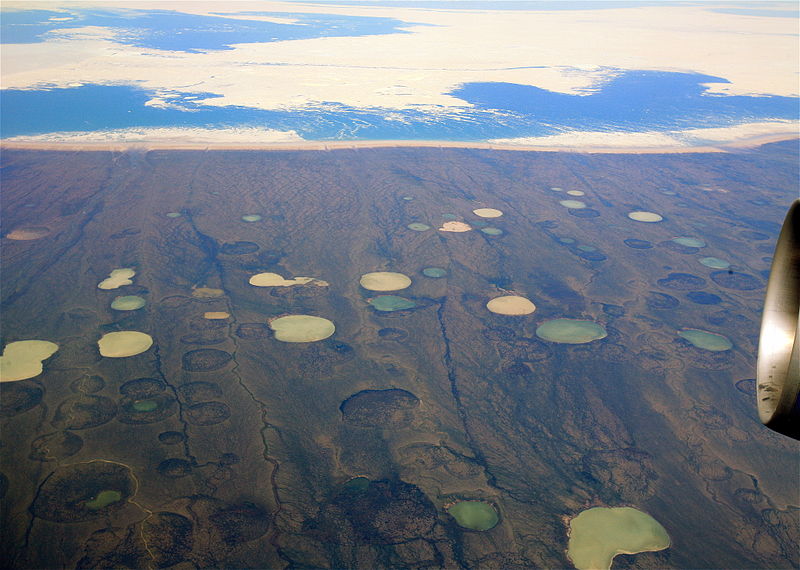Evaluating the Effects of Climate Change on Permafrost in Northern Coastal Canada

Photo attributed to Steve Jurvetson. Incorporated here under the Creative Commons Attribution 2.0 Generic license. No endorsement by licensor implied.
Posted by
Rachel GreggProject Summary
Permafrost in Northern Canada provides a foundation upon which ecosystems and human communities can build. Increased air temperatures associated with climate change are expected to thaw or melt permafrost across the region; land use decisions and plans need to adjust to these changing climate conditions. This study will provide scientific understanding and tools to assist land use planning and management decisions within the context of climate change in Canada’s northern communities in Inuvialuit, Nunatsiavut, Nunavut, and Yukon.
Background
Permafrost (the area of ground that remains permanently frozen) underlies a large percentage of Northern Canada’s landmass. Its thickness and existence depends largely on atmospheric climate conditions. With increased temperatures, permafrost will likely disappear; as it thaws, associated problems may take place in the form of ecosystem degradation and infrastructure instability, requiring the implementation of adaptation actions to help Aboriginal and non-Aboriginal inhabitants prepare for climate change. The objectives are to evaluate how permafrost will react to global climate change and to assess the factors that may affect the degree of impact on permafrost (e.g., soil type, ground and snow cover, topography, ice content). Products may be useful for managers and planners dealing with projected climate impacts in these polar and subpolar regions. Funding for this project is provided by Ouranos and ArcticNet.
Implementation
Project leaders from McGill University and the Centre d’études Nordiques are supported by other partners, including Coopération Québec Bavière, and the Governments of Inuvialuit, Nunatsiavut, Nunavut, and Yukon. The project, started in April 2008, is expected to last through 2014. Project leads are modeling ground surface temperatures under different scenarios and monitoring for landscape changes, such as coastal erosion and landform development, across a range of environments.
Outcomes and Conclusions
Upon project completion, managers, planners, and policy makers will have access to maps and tools to assist decision-making in a highly vulnerable region.
Citation
Gregg, R.M. (2010). Evaluating the Effects of Climate Change on Permafrost in Northern Coastal Canada [Case study on a project of McGill University and Centre d’études Nordiques]. Product of EcoAdapt's State of Adaptation Program. Retrieved from CAKE: http://www.cakex.org/case-studies/evaluating-effects-climate-change-per… (Last updated April 2010)







